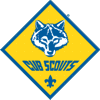Crystal Radio Project
Introduction
In the first half of the 20th century, radio was
the dominate method of getting news and entertainment. Early radios used crystals to rectify the
radio signals, and many people built their own radios from materials they found
around their homes. The Boys Scouts
required their boys to learn Morse Code for the First Class Rank through the
late 1960’s, and many of these boys learn to build their own radio sets. In fact, when I was a Cub Scout in 1979 my
Bear Book had instructions on how to build a set.

|
Crystal Radio Project from “Bear Cub
Scout Book” circa 1978. Elective 3-
Radio.
|
This build is defiantly more challenging, but is a lot of
fun as you are building your own capacitor (aka condenser) and using a Galena
crystal and safety pin (cat whisker) for the diode. The build that we will discuss in this forum
will use conventional electrical components to keep it easy.
One item to point out is that the crystal radio does not
require batteries, as it derives it’s current from the radio waves resonating
with the antennae.
Cub Scout
Achievements
Ultimately, this type of project really no longer a actual requirement
for scouting. However, it can meet the
following requirements:
Required Parts (for
one radio)
Item
|
Quantity
|
Best Source
|
6x6x3/4-inch pine wood plank
|
1
|
Hardware Store
|
felt footpads
|
4
|
Hardware Store
|
2-inch diameter x 3.5 inch long Schedule 40 PVC pipe
|
1
|
Hardware Store
|
22 AWG enamel coated magnet wire
|
150 feet
|
Electronic Store
|
120 picofarad ceramic disc capacitor
(or 100 and 22 picofarad in parallel)
|
1
|
Electronic Store
|
1N34A germanium
diode
|
1
|
Electronic Store
|
82 kΩ, 5%
¼-watt carbon resistor
(bands: violet, red,
orange, gold)
|
1
|
Electronic Store
|
Brass rod, ⅛ inch diameter, 7 inch long
|
1
|
Hardware Store
|
⅛ inch inner
diameter black plastic knob
|
Hardware Store
|
|
#6 nickel-plated
Fahnestock clips
|
4
|
Electronic Store
|
#6 x ½ inch screws
|
7
|
Hardware Store
|
#6 washer
|
1
|
Hardware Store
|
#8 x ¾ screw
|
1
|
Hardware Store
|
#8 washer
|
1
|
Hardware Store
|
Fine-grit sandpaper (2 inch square)
|
1
|
Hardware Store
|
Mini-audio Amplifier
|
1
|
Radio Shack
|
Speaker Wire
|
55 feet
|
Hardware or Electronic Store
|
Grounding Rod
|
3 feet
|
Hardware Store
|
OPTIONAL: 1/8-inch mono audio jack
|
1
|
Electronic Store
|
OPTIONAL: High Impedance Ear Phone
|
1
|
You will obviously need enough parts for all the radio sets
for your group. If buying in bulk a lot
of the electrical components are best purchased from Amazon.
Instructions
SAFETY WARNING: DO NOT OPERATE THIS RADIO OR HAVE THE ANTENNA
CONNECTED DURING THUNDERSTORMS OR OTHER SEVERE WEATHER.
I used the following website as the basis for my project:
Go ahead and follow those instructions, and see below for
some of the alteration I made.
Here is my finished product:
The following alterations were made:
1-
I used the PVC pipe instead of the Cardboard Tube. My reason is that the PVC seems more durable
during the wrapping process.
1- I couldn't find a 120 picofarad capacitor so I used 100 and 22 picofarad capacitors in parallel.
2-
I used a 1/8-inch mono phono jack. Both the amplified (RadioShack) and high
impedance earphone comes with a 1/8-inch jack, so to use them, rather than cut
the jack off and strip the wires, I added this component.
3-
I bought a 3 foot ¼-inch diameter steel rod from
Home Depot, and push it 2 feet into the ground for the grounding. I created a connection from the radio and the
grounding rod with 5 feet of speaker wire and an alligator clip.
Advice:
1-
Pre-wrap the coils to avoid complications in
the construction of the devices. This
takes times, and if you get some parents to help you all the better.
2-
Make sure the black band on the diode is
orientated properly (towards the earphone/speaker connector).
3-
Use this document to send home with
parents. It has important safety
information regarding the antennae and hazardous weather.
4-
For the antenna I bought spools of 300 feet of
speaker wire, cut into 50 foot lengths, and split the wire (there are 2 wires
side by side, you just need to use a razor to cut between them and then pull
apart). This gives you 12 sets of
antenna. I also soldered one end of the
wire to prevent it from fraying when connected to the radio.
5-
Do not provide them with a ground rod, as they
may be able to connect to their own (usually the gas meter at their house) or
provide their own. This will keep the
costs down on materials.
6-
The same thing for the amplified speakers, this
component is $25 at radio shack (though less expensive ones can be found for
less than $10 for battery powered speakers).
I provided the boys with an earphone and if they want speakers they can
get their own. Computer (plug in the
wall) speakers also work well.
7-
When demonstrating have an adult hold the far
end of the antennae so they can move around to get the best signal.









